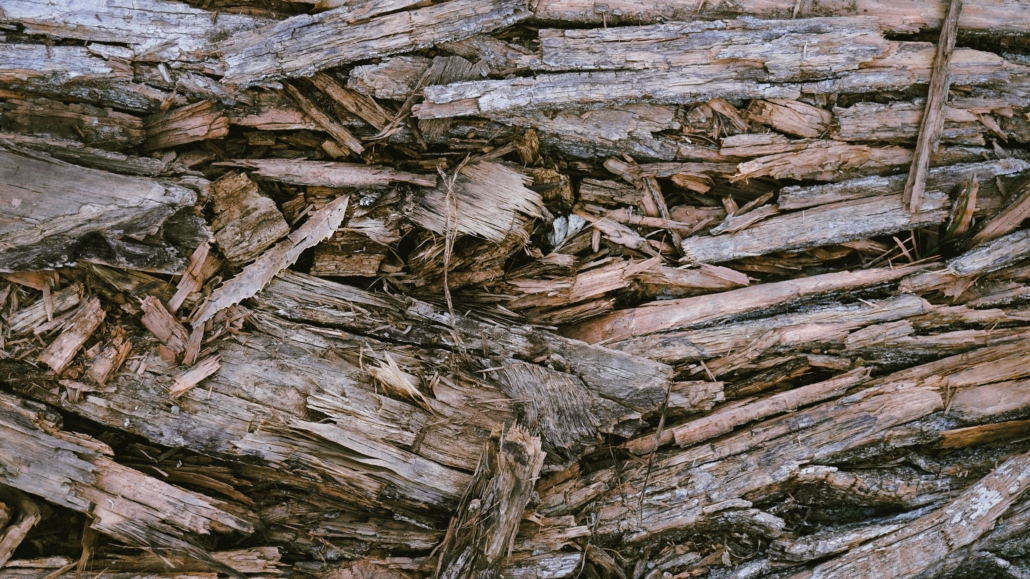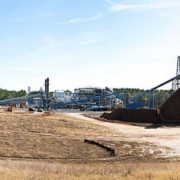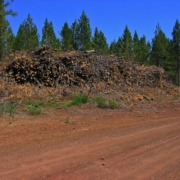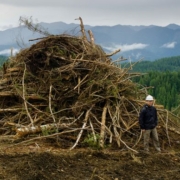Renewable Resources-Woody Biomass
Wood is one of nature’s best and most abundant renewable resources and human beings have used wood in a myriad of ways since time immemorial. In lockstep with technological progress, the utilization of wood products has advanced to create new opportunities in such diverse fields as architecture, computer technology, and energy consumption. In this week’s Nature’s Packaging post, we will look deeper into wood as an innovative energy resource.
Biomass
Biomass is renewable organic plant or animal material. Biomass energy sources include things like plants, crops, left over materials from agriculture and forest harvesting, gases produced from landfills, and industrial/municipal solid wastes.
What makes them renewable? In the case of plants, crops, agriculture and forest residuals, they can be consumed through various means and then replanted and grown quickly again. On the other hand, industrial and municipal waste is produced on a continual basis.
In many cases biomass, as a renewable energy source, can be converted to energy by burning or through chemical reaction. This energy can be used for everything from producing heat for homes, electrical power for buildings, and even fuel for vehicles (i.e. Ethanol).
Woody Biomass
Woody biomass is the residual material from trees and shrubs that includes the parts of a tree not normally harvested for use: the roots, leaves, branches, smaller limbs, bark, and sometimes vines. Woody biomass comes from various sources: forest management operations, trees grown for energy use, forest products waste, wood used as fuel, urban wood waste, tree and forest thinning operations that are implemented to reduce the damage from forest fires and woodland pests.
- Forest management operations – This includes the material typically left behind when a forest is harvested for timber like branches, treetops, stumps, and other remains
- Trees grown for energy use – Trees or woody plants that grow back quickly when trimmed. This includes short-rotation plantings for species like poplar and willow.
- Forest products waste – The sawdust and scrap material from sawmills and furniture production are included in this category.
- Wood fuel – items like pulp wood and commercial grade timber used as a fuel source for heating buildings or used as heat in an industrial process.
- Urban wood waste – Wood debris that is generated from clearing land, storm residues, trimmings from landscaping and clearings from power-line trimmings.
- Tree and forest thinning – trimming and thinning forests and tree stands including the removal of unwanted tree species and plants. All remnants that are removed in order to maintain or improve the ecological health of the forest and improve its ability to prevent the risk of wildfires.
Woody Biomass Energy
Most of the woody biomass sourced for energy is the by-product of forest management operations and the forest products industry. As an energy source, woody biomass is primarily converted to energy through the processes of combustion, chemical conversion, biochemical conversion, and thermo-chemical conversion.
- Combustion – burning woody biomass to produce heat.
- Chemical conversion – breaking down woody biomass using a chemically induced process. Think biodiesel.
- Biochemical conversion – using a living organism (i.e., bacteria or yeast) to break down biomass
- Thermochemical conversion – exposing biomass to heat produces different types of gases and liquids, or solids (i.e., gasification, liquefaction, pyrolysis)
Electricity
Wood can be burned in a boiler to produce electricity. Heat from the burning wood boils water and generates steam, which powers turbines and creates electricity. The electricity is often utilized to power everything from small industrial operations to municipal power plants.
Heat
Building and using a fire to keep warm is the oldest heating method in the world. In the context of woody biomass and heat, these heating systems (boilers, stoves, and outdoor furnaces) are typically used to heat building and/or industrial spaces. A common alternative includes wood pellet heating systems for both the home and commercial uses.
Wood pellets are a biomass product that has been processed and condensed into small cylindrical pellets that are ideal for storage and heat production due to their small size and density. In recent years, they have become a popular method for heating homes, via a wood pellet stove, and are increasing in popularity for commercial/industrial heating as well.
Co-generation
When electricity and heat are generated and used at the same time, this process is referred to as co-generation or Combined Heat and Power (CHP). In commercial and industrial settings, boilers that use wood to produce electricity also produce hot water and/or steam which is utilized in other applications. Co-generation is the most common use of wood energy in the United States. Pulp and paper manufacturing plants use woody biomass and wood by-products in these systems to produce heat and power.
Biofuels
While most fuels for transportation are produced from refining petroleum products, biofuels are being explored extensively to mitigate concerns over traditional fossil fuel depletion, environmental issues, national energy security, and fluctuating prices. The most recognized biofuel types are ethanol, methanol.
- Ethanol – wood based (cellulosic) ethanol is produced from the cell walls of woody materials. Chemically more complex than traditional plant-based ethanol, cellulosic ethanol burns cleaner than gasoline and diesel. It has low carbon, sulfur and particulate emissions as well.
- Methanol – also known as wood alcohol, it is derived from the distillation process of wood. Typically used in professional racing fuel and as an additive to increase the octane of gasoline.
Woody biomass as a natural, renewable resource utilized to generate heat, electricity, power, and fuels has both advantages and disadvantages. In removing it from forests, it can help maintain healthy forests and help mitigate the risk of wildfires, however it is important to understand that over-use or stripping out too much woody material can have a negative effect on soil fertility and natural habitats. It is a delicate balance between economy and ecology where practices like silviculture can help define the right mix.
A common question is whether there is enough woody biomass available to create a sustainable resource that can scale to meet the needs of a large population sector or manufacturing base. This will depend in part on government policies, incentives, and entrepreneurial activity that drives new innovations in the sector.
While there is no energy source, renewable or otherwise, that is complete in its ability to solve all the challenges associated with energy production and consumption, woody biomass certainly provides viable alternatives that can and will complement those needs now and in the future. Wood will always be good.

 Photo by
Photo by 








